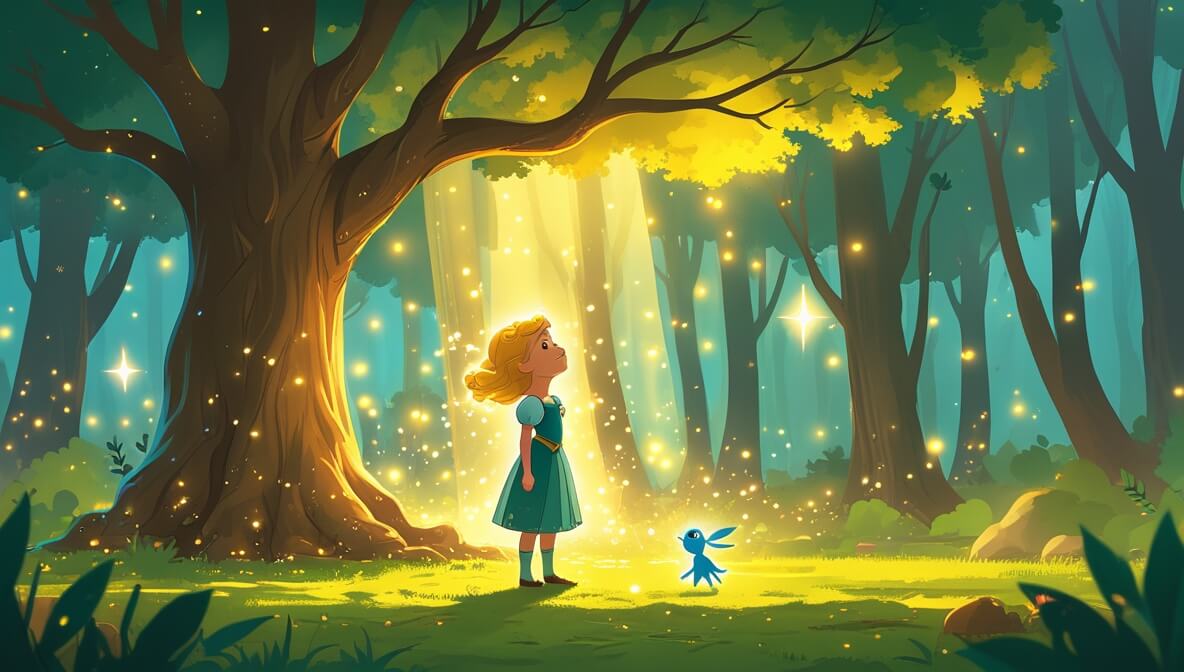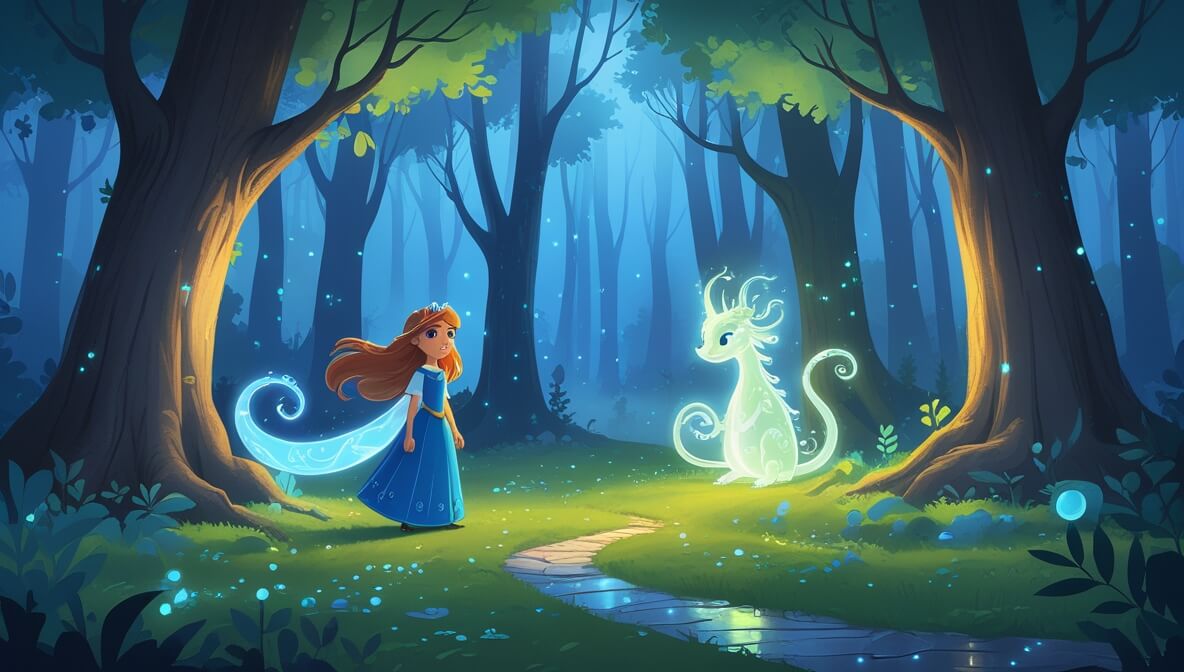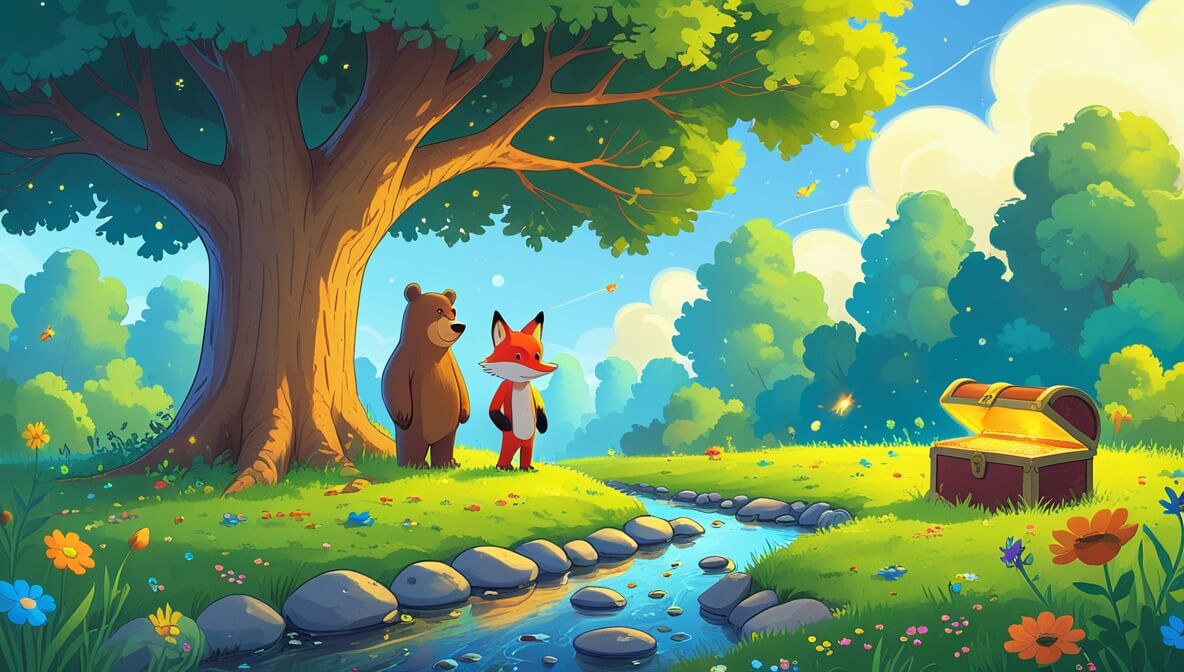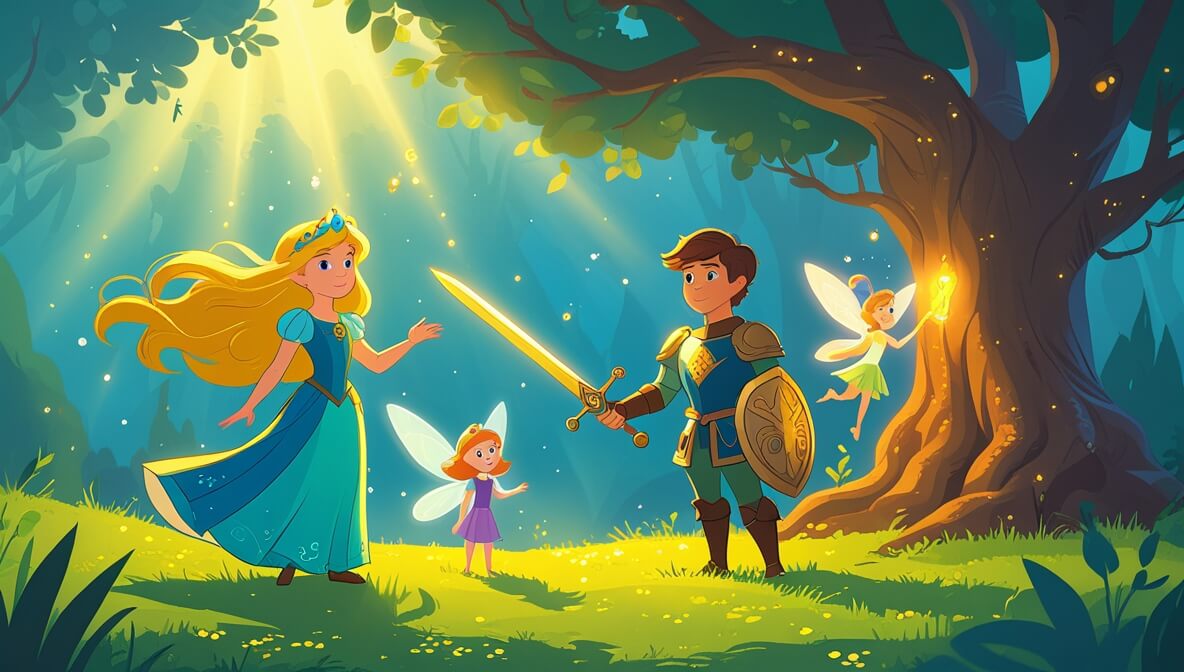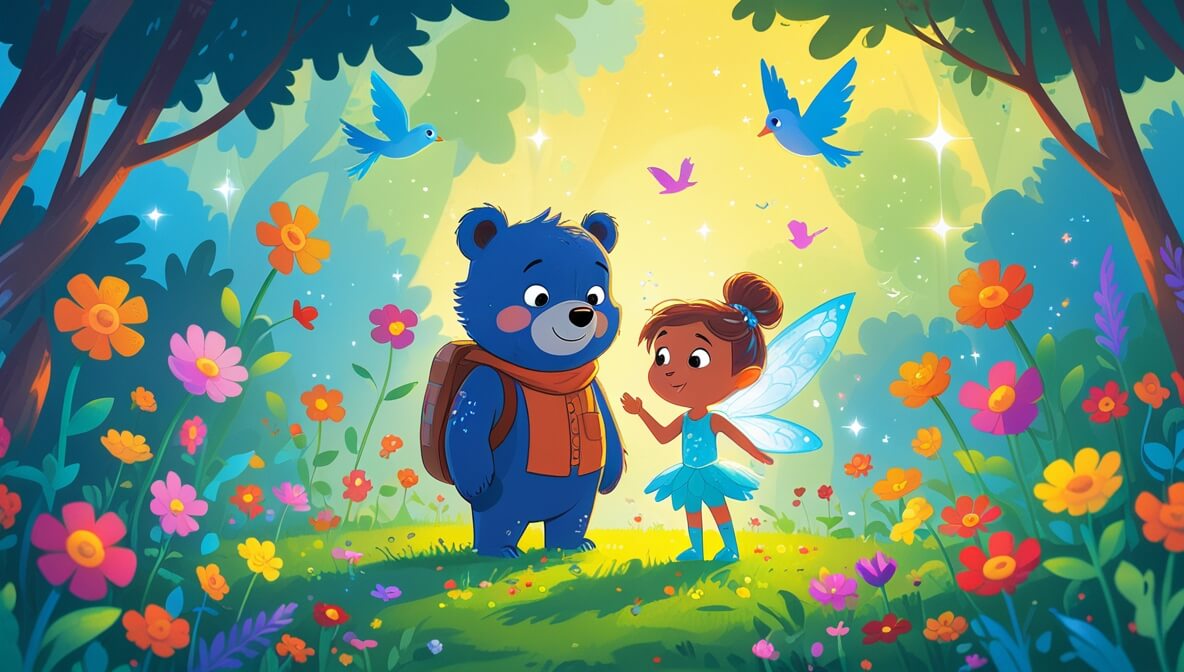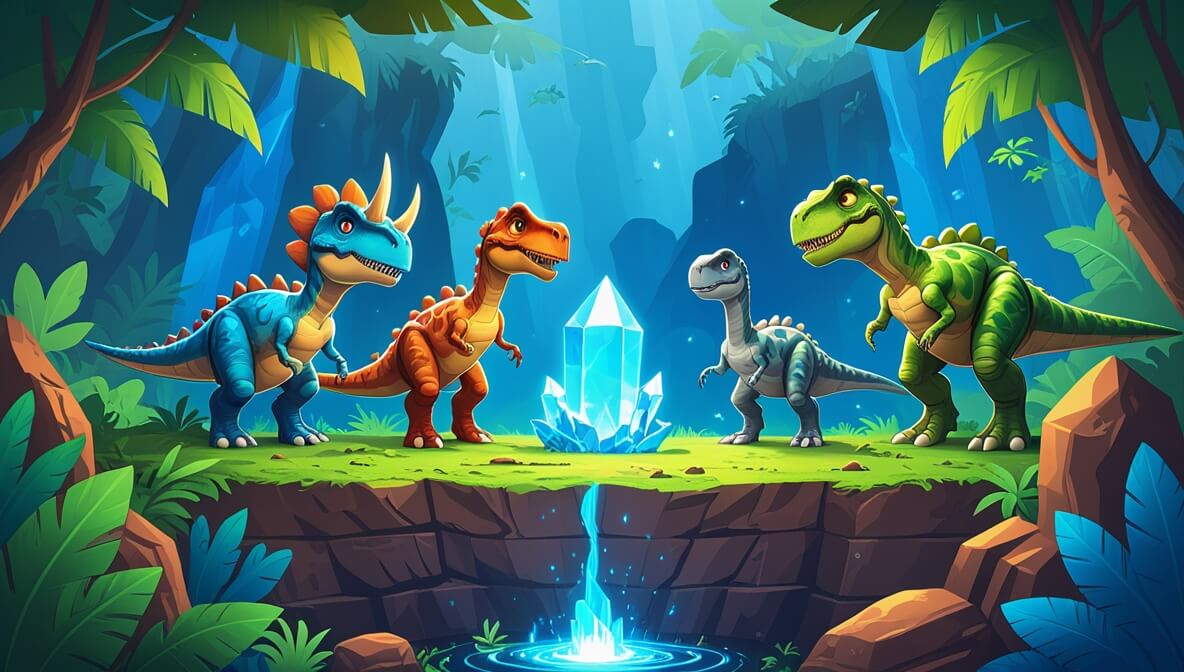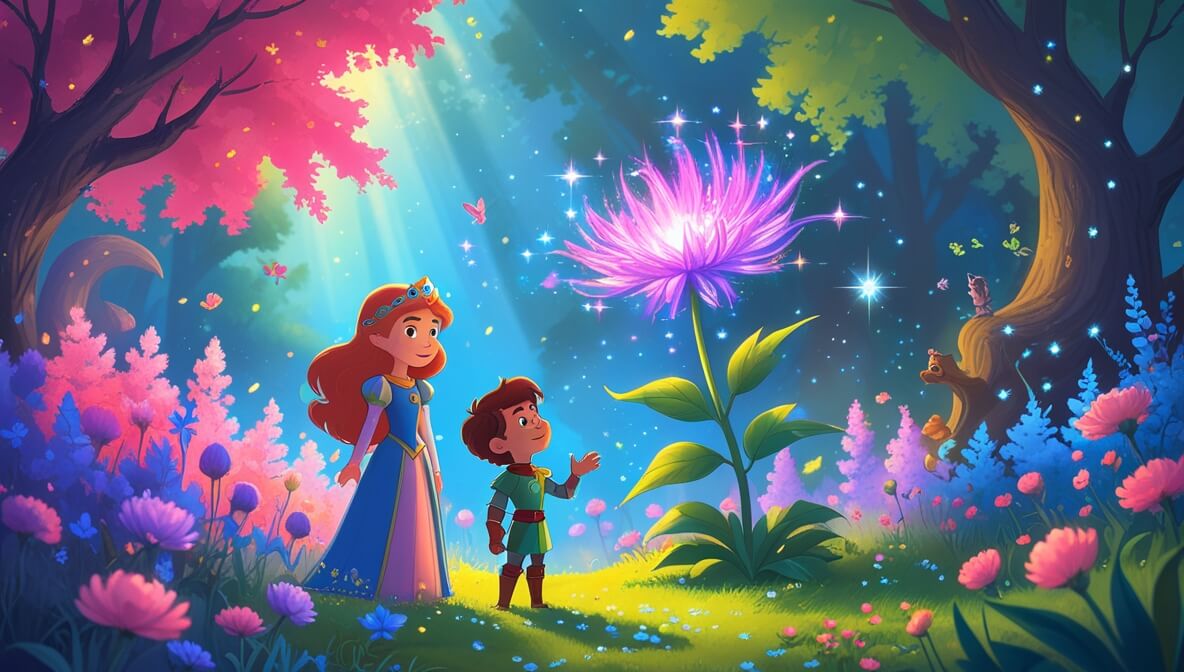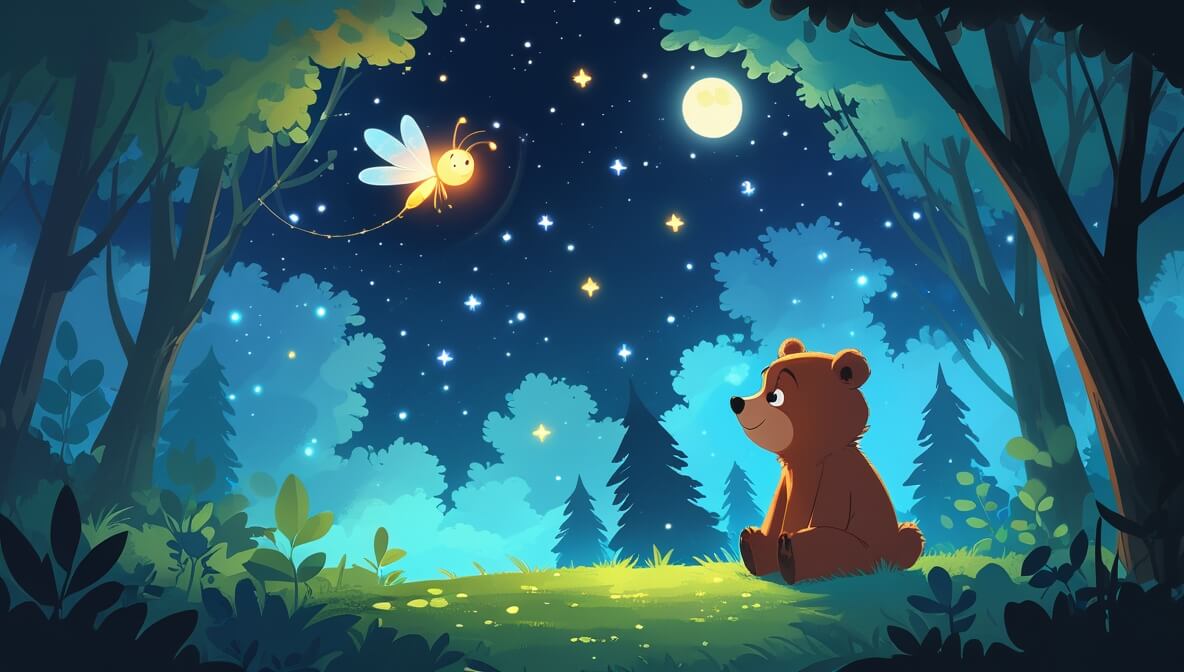In a magical forest, a curious fox and a tiny bird discover the beauty of rainbows. Together, they learn about friendship and the wonders of nature.
Age Recommendation
0 – 4 years
Characters
Characters:
- Fizzle (a curious young fox with a fluffy tail)
- Chirpy (a tiny bird with bright, colorful feathers)
Story
Once upon a time, in a magical forest filled with tall trees and sparkling streams, there lived a curious little fox named Fizzle. Fizzle loved to explore and make new friends. One sunny day, Fizzle noticed something colorful in the sky. “What is that?” he wondered.
The Sky’s Colorful Secret
Fizzle called his friend Chirpy, the tiny bird, to see the sky’s magic. Chirpy flapped her bright wings excitedly. “Oh, Fizzle! It’s a rainbow!” she chirped joyfully. Fizzle had never seen a rainbow before and was enchanted by its beauty.
Chasing the Rainbow
Fizzle and Chirpy decided to follow the rainbow. They ran and flew through the forest, past blooming flowers and buzzing bees. “Let’s see where it ends,” said Fizzle. They imagined a pot of gold or a land of candy at the end.
Discovering Friendship
As they followed the rainbow, Fizzle and Chirpy realized something important. “It’s not just the rainbow that’s special,” said Chirpy, “it’s the time we spend together.” Fizzle nodded happily. He understood that friendship was the true treasure.
The end.
Moral of the Story
Friendship and shared experiences are more valuable than any treasure. Enjoy the journey and cherish the moments spent with loved ones.
Questions to Think About
- What made Fizzle and Chirpy happy during their adventure?
- Why do you think rainbows are special?
- Can you think of a time when you had fun with a friend?
- What colors do you see in a rainbow?
- What would you wish to find at the end of a rainbow?
Do You Know
- Rainbows are made when sunlight shines through raindrops, creating beautiful colors in the sky.
- Birds have different types of feathers that help them fly and keep warm.
Word Explorer
- Curious: Wanting to learn or know more about something.
- Enchanted: Filled with great delight or charm.
- Journey: A trip from one place to another.
Emotions in the Story
- Curiosity: Fizzle felt this when he saw the rainbow and wanted to know more.
- Joy: Chirpy felt this when she saw the rainbow and shared it with Fizzle.
- Contentment: Both Fizzle and Chirpy felt this when they realized the value of their friendship.
Color Your Scene
Imagine Fizzle and Chirpy standing in a field of flowers, looking up at a big, bright rainbow. Draw them with their happy faces and the many colors of the rainbow above them. Use lots of reds, oranges, yellows, greens, blues, and purples!
Parents’ Corner
This story is a wonderful opportunity to talk to your child about:
Friendship: Discuss how Fizzle and Chirpy enjoyed their adventure more by being together.
Curiosity: Encourage your child to explore the world around them and ask questions.
Appreciating Nature: Talk about the beauty of natural phenomena like rainbows and how they can bring joy.



